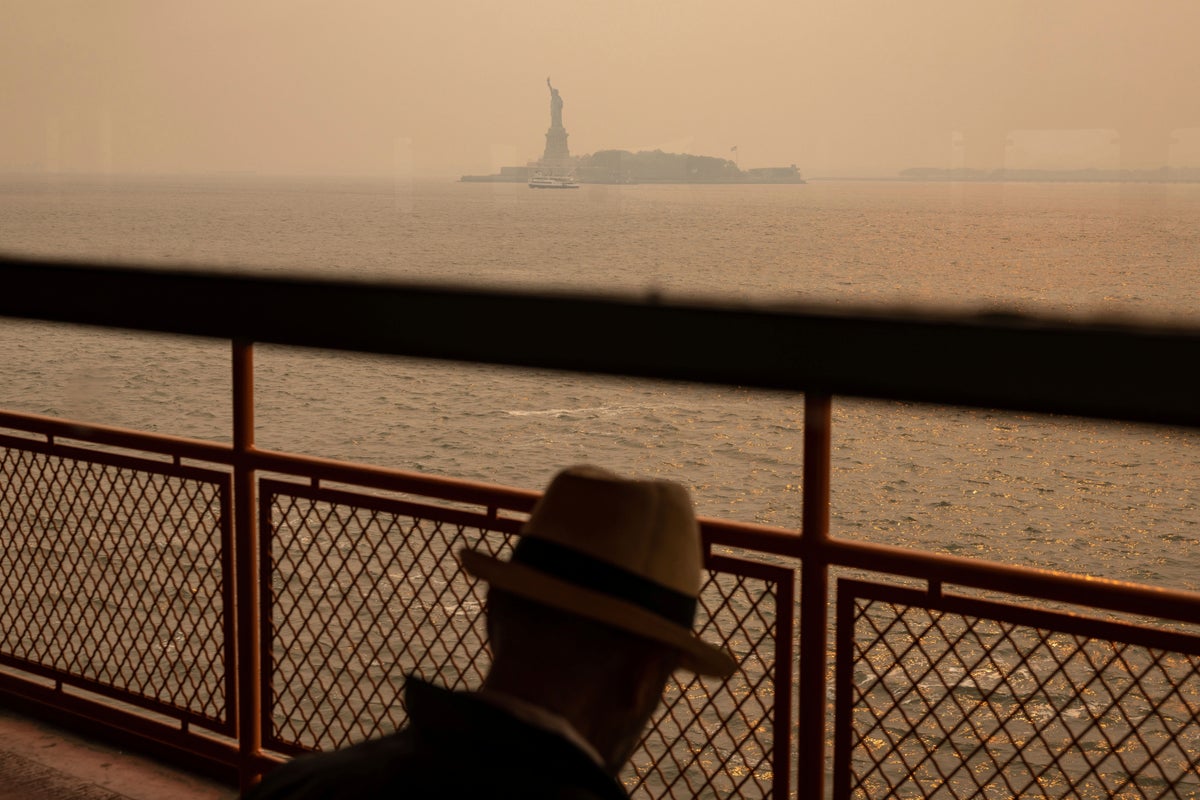
The air quality in New York is set to “deteriorate very quickly” over the next 48 hours as smoke from the Canadian wildfires shifts over the state.
NY Governor Kathy Hochul warned residents that air quality could reach “unhealthy” levels in some parts of the state on Wednesday.
Gov. Hochul advised high-risk groups – children, senior citizens, pregnant women, elderly persons, or people with respiratory disorders – to remain indoors as the smoke descends on New York.
“We’re also giving alerts to people about outdoor workers, making sure supervisors know it is not recommended unless people are wearing masks,” she said.
Earlier this month, New York City’s skies were stained a shade of apocalyptic yellow as smoke from the wildfires descended on the Big Apple along with large areas of New Jersey and Connecticut.
For a few hours on 7 June, the city was declared the most polluted in the world, surpassing Delhi, Baghdad, Doha, Kuwait, and Dhaka.
“Similar to what we saw a short time ago, the air quality is deteriorating very quicky in our state, as a result of the Canadian wildires,” Ms Hochul said. “Over the next 48 hours, we’re anticipating the smoke and the haze to come all across the state.”
She added that western and central New York would be hit first, and the smoke would affect New York City on Thursday.
The air quality in western New York is likely to be “unhealthy” or between 150-200, and “unhealthy for sensitive groups” in eastern parts of the state – with the levels between 101 - 150.
“But as we saw last week, this can deteriorate very quickly,” Ms Hochul added, explaining the Air Quality Index (AQI) touched 400 in New York City earlier this month, described as “hazardous”.
Speaking at a news conference about congestion pricing, she said: “If you want to know the effects of climate change, you are going to feel it tomorrow in real-time.
“This is not something that we are talking future generations dealing with it, we are truly the first generation to feel the real effects of climate change and also the last generation to do anything meaningful about it.”
According to the EU’s Copernicus Atmosphere Monitoring Service (CAMS), the forest fires in Canada – that began early May – have released more carbon dioxide emissions in the first six months of 2023 than in any full year on record.
As per the CAMS, the wildfires have generated nearly 600 metric tonnes of CO2, equal to 88 per cent of Canada’s total greenhouse gas emissions from all sources in 2021.
This year’s wildfire season is the worst on record, according to the Canadian Interagency Forest Fire Centre, with a combined area of 76,000sq km (29,000sq miles) currently on fire in Canada.







